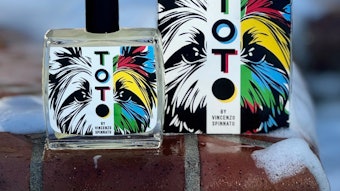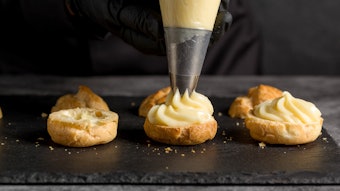Due to acquisitions in the industry, the rankings of some companies have changed year-over-year, and space has been cleared to make room for some new entrants. As with previous editions, this year’s list includes two unranked entities—Cargill and Mastertaste—which belong among the top tier of F&F, despite unavailable fi rm sales data. The order in which these two companies appear on the 2008 FFL is no refl ection on their actual rank within the industry.
2008 FFL: the Analysts’ View
What is most striking about the 2008 FFL is the fact that the top 10 companies’ sales for 2007 total ~$13.7 billion, or just shy of 70% of total industry sales. Companies outside of this group have combined sales of approximately $5.7 billion. As companies continue to consolidate, so will sales.
A recent report from Business Insights, “The Top 10 Flavor and Fragrance Companies,” provides some understanding of this phenomenon. “Huge overhead costs due to rising raw material prices and R&D expenses are encouraging smaller companies to merge with bigger ones,” the report states, adding that heavy investments are necessary for organizations to keep up research, innovation and service. Business Insights also cites globalization as a key driver of F&F consolidation. “As tastes vary according to geographies, flavor manufacturers are required to have a thorough knowledge of local tastes in each of the countries in which they are active.”
Business Insights identifies a number of company activities throughout the top tier that are shaping the road ahead. Firmenich (Page 40), which in recent years elevated its US fragrance position and standing in the global flavor market with its purchases of Noville and Danisco’s flavor division, respectively, has now made its Swiss facilities more environmentally friendly. “[T]he company replaced its energy system by moving from oil to gas at its plant in La Plaine. The investment is expected to reduce Firmenich’s global CO2 emissions by more than 5% annually and reduce costs.”
Frutarom (Page 47), meanwhile, is finding synergies between its flavor and fine ingredients divisions. “The Top 10” report notes that the company is focused on expanding into both Western Europe and emerging regions such as Eastern Europe, India and China, taking advantage of recent acquisitions—seven in 2007 alone. In addition, Business Insights expects Frutarom to expand in the United States, in part, via more acquisitions.
“[Givaudan] (Page 39) is currently focusing on moving towards high value adding molecules which depict phenomenal growth in specialty ingredients,” the report continues. Meanwhile, Business Insights underscores the F&F leader’s significant investments in India over the past decade, concluding that Givaudan is eyeing increased presence there and in China. In addition, says the report, “Givaudan is shifting towards health and wellness initiatives as this is one of the upcoming growth drivers prevailing in the industry.”
In 2006, IFF (Page 42) launched 20 “commercially viable” flavor and fragrance materials, Business Insights notes. In tandem with its expansive R&D capabilities, “The Top 10” explains that the company is pursuing “flavor fusion, blending flavors from one culture with those of another.” In addition, IFF is focusing on leveraging its expertise to serve health and wellness. “The trend towards low sugar and low carbohydrate foods and drinks continues to drive the market for flavors, as these need heavier flavorings.”
“Due to relatively flat growth in mature markets, countries like China, Russia and South Africa offer tremendous growth opportunities,” explains Global Insights regarding Mane’s (Page 44) international expansion. Meanwhile, the company’s naturals heritage is expected to serve it well. “The use of organic and natural products will help the company to cater to the demand for natural products in the market.”
Robertet (Page 47), another French house with an extensive pedigree, has recently turned to the United States on both the flavor and fragrance side, opening a fragrance lab in Manhattan, opening a dry blending site and expanding its existing facility to enhance juice blending and homogenization. Finally, Business Insights says, “[i]t bought a 48.45% stake in Charabot … to strengthen its position in the natural aromatics market.”
Sensient (Page 44), meanwhile, has been focused on new product development and innovations, spending $25 million on R&D in 2006 (for color, flavor and fragrance). Eyeing Sensient’s future, “The Top 10” says, “The company wants to leverage new opportunities in multiple segments all around the globe and expand in several markets, including South America, Central Europe and Asia.”
Symrise (Page 42) has boosted its savory capabilities with the purchase of Unilever’s UK non-branded food ingredients business and is expanding into biotech development of aroma molecules with select partners. Business Insights also notes that, “In the Asia-Pacific region, [the company] is expanding subsidiaries in China and India, allowing them to assume decentralized responsibility for production, development and marketing in these countries in the future.”
T. Hasegawa (Page 46) is looking to branch out, particularly in the United States and Europe (“inorganically”), and China, says Business Insights. The report notes that, “The company seeks to boost Chinese sales from about … ($25 million) 2006 to … ($88 million) by 2015.” In 2009, T. Hasegawa will bring a Chinese plant to full-scale operation, part of a larger effort to expand there and in the rest of Asia.
Finally, the report discusses the slowing domestic demand Takasago (Page 43) has recently faced. In response, the company has set a goal of raising overseas sales to 50% of total revenue by 2010 (in 2007 those sales totaled 40% of total revenue). As part of this program, Takasago is expanding its German flavor plant, enhancing its powdered flavoring site in Singapore and upgrading its fragrance blending capabilities in France. Business Insights concludes, “The company also seeks to expand its global sales system to include China, Eastern Europe and South America.”
As companies continue to seek new ways to grow the pie and innovate, more movement among the top-tier F&F companies is inevitable. In the meantime, we present the 2008 FFL.
Other topics discussed: in-depth information on the top 12 companies in the industry










